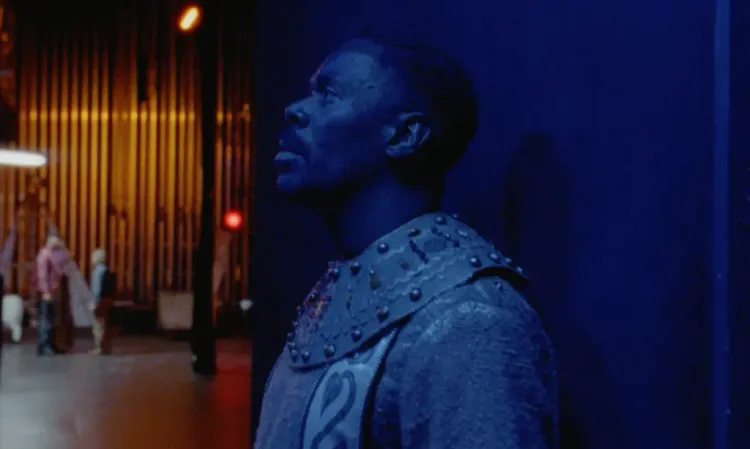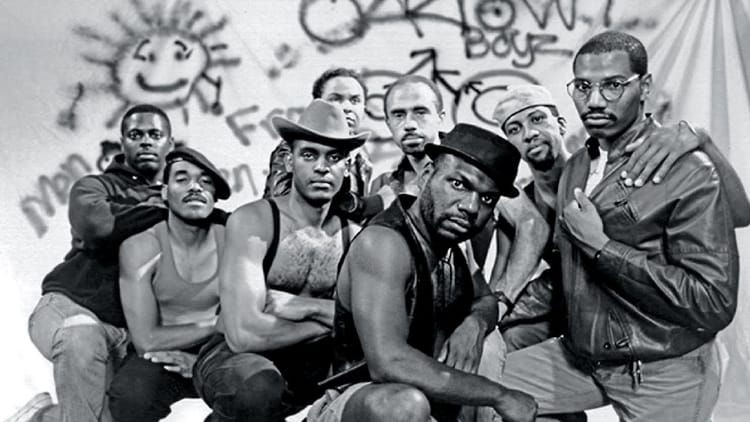Hundreds of Beavers: Dam Good

There's a 1979 western, The Villain, starring Kirk Douglas and Arnold Schwarzenegger, about an outlaw trying and failing to kill a good-hearted cowboy and steal his woman, played by Ann-Margret. It attempts to be a live-action homage to the cartoon slapstick of Tex Avery and Chuck Jones, and fails utterly. The gags are dreadful, the script is awash in brain-boiling racist caricatures of Native Americans, and the cartoon logic never gels with the staid visual language of live-action Hollywood. This is all to say that the pitch of 'live-action cartoon' is very difficult to pull off, as what comes naturally in animation—absolute control of the limited elements on screen, which can change within the space of a frame—is the opposite of filmed action, where the physical elements are all prepared ahead of time and their behavior captured in the moment at 24 frames per second.
It's seen in the light of The Villain's failures that Hundreds of Beavers, a self-distributed independent film made in the snowy wilds of Whitefish Bay, Wisconsin that is currently making a brief theatrical and VOD run, is not just one of the funniest movies in recent years, but also a miracle of media cross-pollination. It is not strictly speaking live-action, but instead a heady hybrid of silent film pratfall, cartoon slapstick, and video game shorthand that really is like nothing else.
The first act is all vintage Wile E. Coyote, as 19th century applejack salesman-turned-trapper Jean Kayak (Ryland Brickson Cole Tews, who also co-wrote the script) suffers injury and indignity as he tries to catch something he can sell to The Merchant (Doug Mancheski). When he does, receiving a tiny switchblade for his troubles, he and The Merchant's daughter, The Furrier (Olivia Graves), take a shine to each other, to The Merchant's chagrin. Thus begins a cycle of setting up traps in various locales, all shown on a rudimentary map with an animated avatar of Kayak moving place-to-place, and trading his catches for better tools. These allow him to more efficiently and creatively dispatch the local wildlife, which includes a pack of wolves and the titular beavers, who are hard at work on... something.
There is a lot of overlap with The Villain, and if done in conventional live-action style this would have likely been just as lugubrious and labored. Instead it is riotously energetic. Writer-director Mike Cheslik pulls this off by essentially stripping out as many naturalistic elements from his mis en scene as possible and relying on abstraction and shorthand to keep things moving. To begin with, it is filmed in high-contrast black-and-white. Except for an opening musical number that explains how Kayek went from being an applejack salesman to a trapper, there is essentially no dialogue. The handful of words spoken by the cast are the equivalent of chatter from video game NPC's, a feeling reinforced by the Merchant's outpost being accompanied by the same soothing 'hub world' music each time it's revisited and showing Kayek's upgrades with an icon menu. The performances are cranked up, all huge reactions and gestures, but the editing quickly cuts between what seems like hundreds of painstakingly storyboarded setups. The result has all the lively motivated energy of a cartoon character, with none of the moment-by-moment bits of 'actor business' that normally sell a performance as believable—unless it's a particularly goofy pratfall, in which case the camera keeps on rolling, capturing and protracting Kayek's humiliation.
Ryland Brickson Cole Tews is actually doing incredible work here, considering the unique challenge of the movie's style. A film performance is already a strange composite creation, assembled from multiple takes of multiple angles for a given scene. Here the constituent pieces are even smaller; there is very little if any shot-reverse shot back-and-forth cutting, as the scenes have been broken down into moments, each with mostly unique camera setups. The performances have to imply continuity between these shots—essentially like keyframe posing in animation. Which is fitting, as there is a great deal of effects work and compositing being done. Not in the dull literalism of so much modern CGI, but something closer to Terry Gilliam's moving cut-out collage style used in his work on Monty Python. The human performances, including those in dopey mascot outfits playing animals, are just one element among many. It's all tied together by the soundtrack: original scoring by Chris Ryan mixed in with snippets of kitschy classical and stock instrumental music ala Ren & Stimpy and Looney Tunes, as well as cartoonish sound effects, including a 'thought bubble' cue that I swear is a menu sound in a Legend of Zelda game.
I haven't really talked about how funny the movie is, mostly since it's hard to convey that kind of thing by describing it. But it really is one of the funniest live-action movies to come out in an age, succeeding as it does in channeling the cartoon anarchy of characters expecting one thing and being blindsided by what they get instead. The mid-section of the movie does feel a little long, as it consists of Kayek looping around the map to the same locations in his setup-trap-return-upgrade cycle several times, but this is where the running gags get their workout, elaborating and escalating and subverting as all great comedy does. The whole thing is precision-edited as tightly as possible so that each punchline lands and moves on, and the constantly changing camera setups keep the energy constantly barreling forward, all the way up to its appropriately bonkers climax.
It's hard to believe Hundreds of Beavers exists: a 'make-a-movie-with-your-buddies' project with a $150k bootstrap budget to match, that outclasses its competition while also being like absolutely nothing else, and which has managed to secure release outside Chicago, New York, and L.A. It's an honest-to-god indie.[1] It's still fairly under-the-radar, and absent a prominent celebrity or influencer endorsement it's probably not going to become a viral sensation, but make no mistake, this is better than most anything that will come out this year.
What we typically associate with independent film, your A24's and (Fox) Searchlight Pictures, is more properly termed Indiewood, given the presence of Hollywood money and talent despite the smaller production scale. Outside of being selected for the 2022 Fantastic Fest, the closest thing the movie has to industry ties is Jessica Rosner, a former executive with Kino International, who helped facilitate bookings for self-distribution by its Milwaukee-based producer Kurt Ravenwood. ↩︎





Member discussion